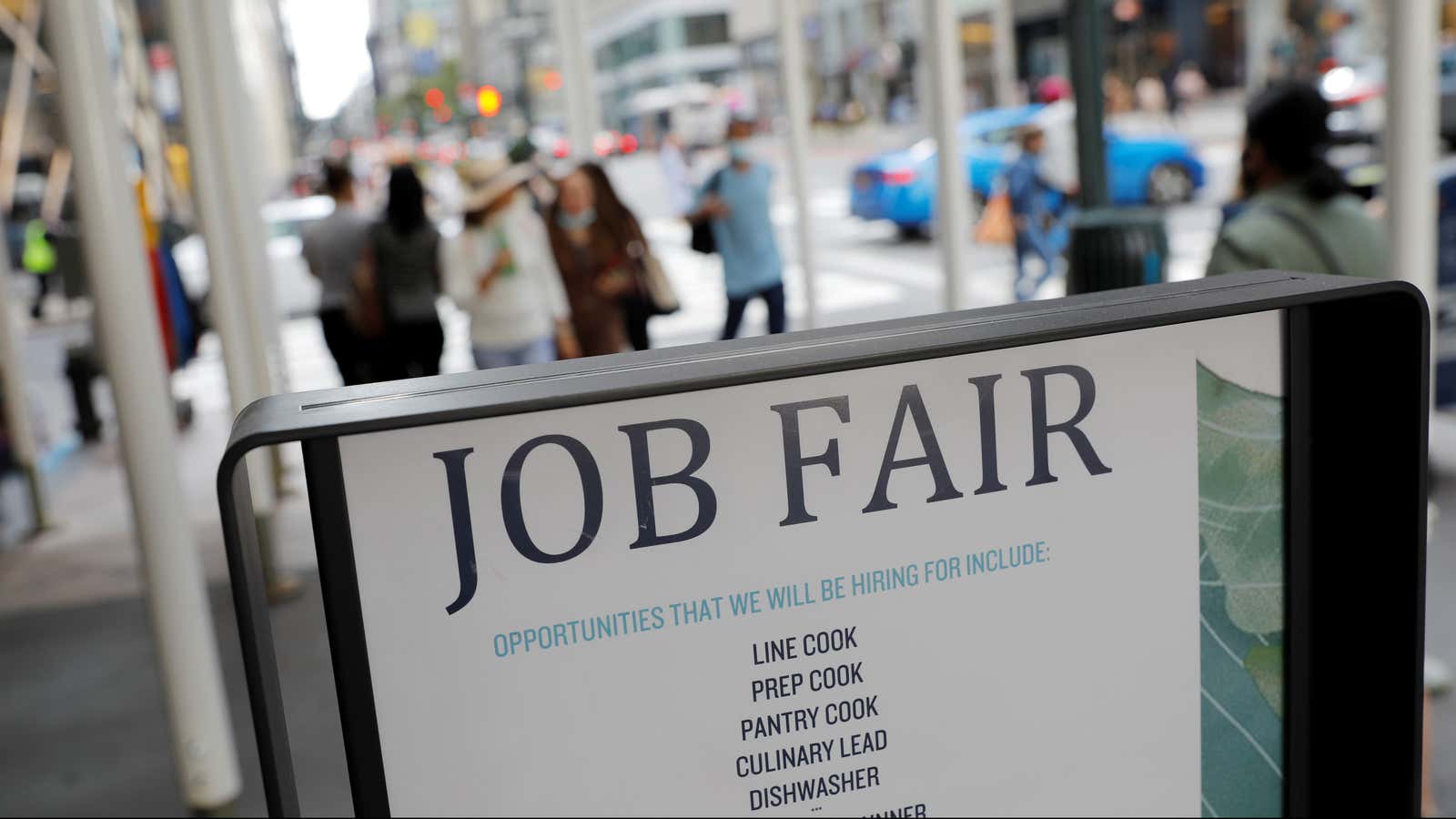Job openings in the US are booming. Where are the workers?
How many job openings are in the US?
There were 10.9 million jobs available in the US in July, the fifth straight monthly record, according to the Bureau of Labor Statistics. Unfilled employment opportunities are swelling even as some 8.4 million Americans remain out of work.
The surge in job openings—and the lack of applications to fill many of them—has triggered one of the biggest debates about the pandemic-era economy. The job market has been torqued by billions of dollars flowing to the unemployed and a surge in savings at a time when many are reassessing whether long commutes, dull jobs, and expensive cities are worth it. Meanwhile, as Covid-19 infections spike in the US, in-person jobs in sectors like retail and restaurant services remain a health risk. And the sectors themselves changed as the pandemic accelerated a shift online in food delivery and shopping.
Part of the worker shortage isn’t new—the mismatch between the skills employers want (computer science, or certain types of manufacturing) and what job seekers are actually trained to do predates the pandemic and is widespread, said Liz Ann Sonders, chief investment strategist at Charles Schwab. One thing that’s changed is the ongoing health risk when it comes to waiting tables or working in retail. Some workers may be staying out of the job market because they have a health condition or, particularly as it relates to women, because they are caring for children or other family members.
At the same time, an elevated number of Americans are quitting their jobs, likely because of growing concerns about Covid-19 infections and because workers may be finding other opportunities that pay more and are safer, said Elise Gould, a senior economist at the Economic Policy Institute in Washington.
The latest jobs data also signaled that a spike in infections from the highly contagious delta variant put a brake on job growth. The US added 235,000 jobs in August, well short of the 733,000 median estimate of economists surveyed by Bloomberg. Hiring in leisure and hospitality was flat, while the food services and retail sectors lost jobs. Some 5.6 million people said they were unable to work because of the pandemic, an increase from 5.2 million in July.
Have emergency unemployment benefits hurt the job market?
Economists are still debating the federal government’s boost in unemployment benefits during the pandemic, and whether that extra support, which expired the first week of September, has kept some workers from re-entering the job market. More than 7 million people are estimated to have lost unemployment benefits when the emergency measures went away.
The benefits served their primary purposes of preventing families from being “financially devastated by the pandemic downturn and by continued weakness in the labor market,” EPI’s Gould said. Data from states that cut off that support early shows that it has increased hardship and has had little to no effect on employment, she added.
Not everyone agrees. Jan Hatzius, chief economist at Goldman Sachs, said on a podcast that those benefits had “quite a large impact on curtailing labor supply.” While some states that ended that support early have had pretty similar employment outcomes to the ones that kept it, Hatzius said that individual-level data tells a different story, suggesting a strong statistical effect. He expects job growth to pick up in the coming months as the extra support expires, and predicts around 1.5 million people will go back to work.
Gould argued that if the extra money did prevent some from going back to work immediately, this would actually be a good thing. That’s because the aid is supposed to help unemployed people hold out for a job that’s suits them well. “So it may take a little longer for them to find the best match for them because of labor market weakness,” she said. “And that’s OK because we want there to be a better long-run equilibrium, so that people are able to use their skills and credentials.”
